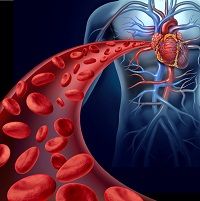Article
Study Looks at Genetic Causes of Atrial Fibrillation
Author(s):
A new genetic analysis of 239 patients provides the new information about which mutations put people at risk of developing atrial fibrillation (AF)

A new genetic analysis of 239 patients provides the new information about which mutations put people at risk of developing atrial fibrillation (AF)
Researchers stratified patients based upon their history of coronary artery disease, valve disease and AF. (The AF classifications divided patients with no history of AF from those who had a history of AF but maintained sinus rhythm during surgery and those who had a history of AF and experienced more AF during surgery or immediately afterward.)
The researchers then took tissue samples from each patient’s left atrium appendage, ran a genome-wide mRNA microarray profile, and looked for relationships between the mutations they found and each patient’s history of AF.
“We sought to characterize the left atrial transcriptome in human AF to distinguish changes related to AF susceptibility and persistence,” the study authors wrote in Circulation: Arrhythmia and Electrophysiology.
“AF susceptibility was associated with decreased expression of targets of several transcription factors related to inflammation, oxidation, and cellular stress responses. In contrast, changes in ion channel expression were associated with AF activity, but were limited in AF susceptibility.”
Specifically, the analysis showed significant ties between AF susceptibility and decreased expression of the targets of the CREB/ATF family: HSF1, ATF6, SRF, and E2F1 TFs. Persistent AF activity was associated with decreased expression in genes and gene sets related to ion channel function consistent with reported functional changes.
“Our results suggest that significant transcriptional remodeling marks susceptibility to AF, while remodeling of ion channel expression occurs later in the progression or as a consequence of AF,” wrote the study authors, who hail from the University of Chicago, the Cleveland Clinic and Case Western Reserve University.
Researchers suspected, long before they could do any genetic analysis, that genes and genetic variations played at least some role in the development of AF because they noticed its tendency to run in families.
Studies over the past decade, however, failed to find any one or 2 “AF genes.” Instead, they found evidence that interactions among a number of genes and external factors govern the condition — interactions so complex that they’re still only partially understood.
Among the genes that appear to have some role in the disease are some that encode myocardial potassium (KCNQ1, KCNA5, KCNE5, KCNJ2, and KCNE2) as well as sodium channels (SCN5A,
SCN1B, SCN2B, and SCN3B), potassium—adenosine triphosphate channels (ABCC9), nucleoporin-155 (NUP155), gap junction protein connexin 40 (GJA5), and atrial natriuretic peptide (NPPA).
Single-nucleotide polymorphisms on chromosome 4q25 have associated with AF in both Europeans and Han Chinese. The rs2200733-T allele carries an odds ratio for AF of 1.90 in combined analysis of several cohorts (p = 3.3 × 10−13).
There is some hope that research into the genetic causes of AF may soon allow doctors to identify patients who are at risk, test them more frequently, catch AF more quickly and thus minimize the damage it does.
However, a recent editorial in the Journal of the American College of Cardiology reviewed the available evidence and concluded that genetic testing would not provide much help in the fight against AF for some time.
“Looking toward the future, costs for genetic analysis will continue to decline. Better recognition of the pathogenic effects of both rare and common DNA variants will improve our ability to interpret such sequencing, and the use of genetic testing will continue to grow,” the journal editors wrote.
“As cardiologists, we must be prepared for the rapidly expanding role of genetic analysis in clinical practice, yet we should remain skeptical about its use for complex disorders, such as AF, until larger studies demonstrate clear utility.”


